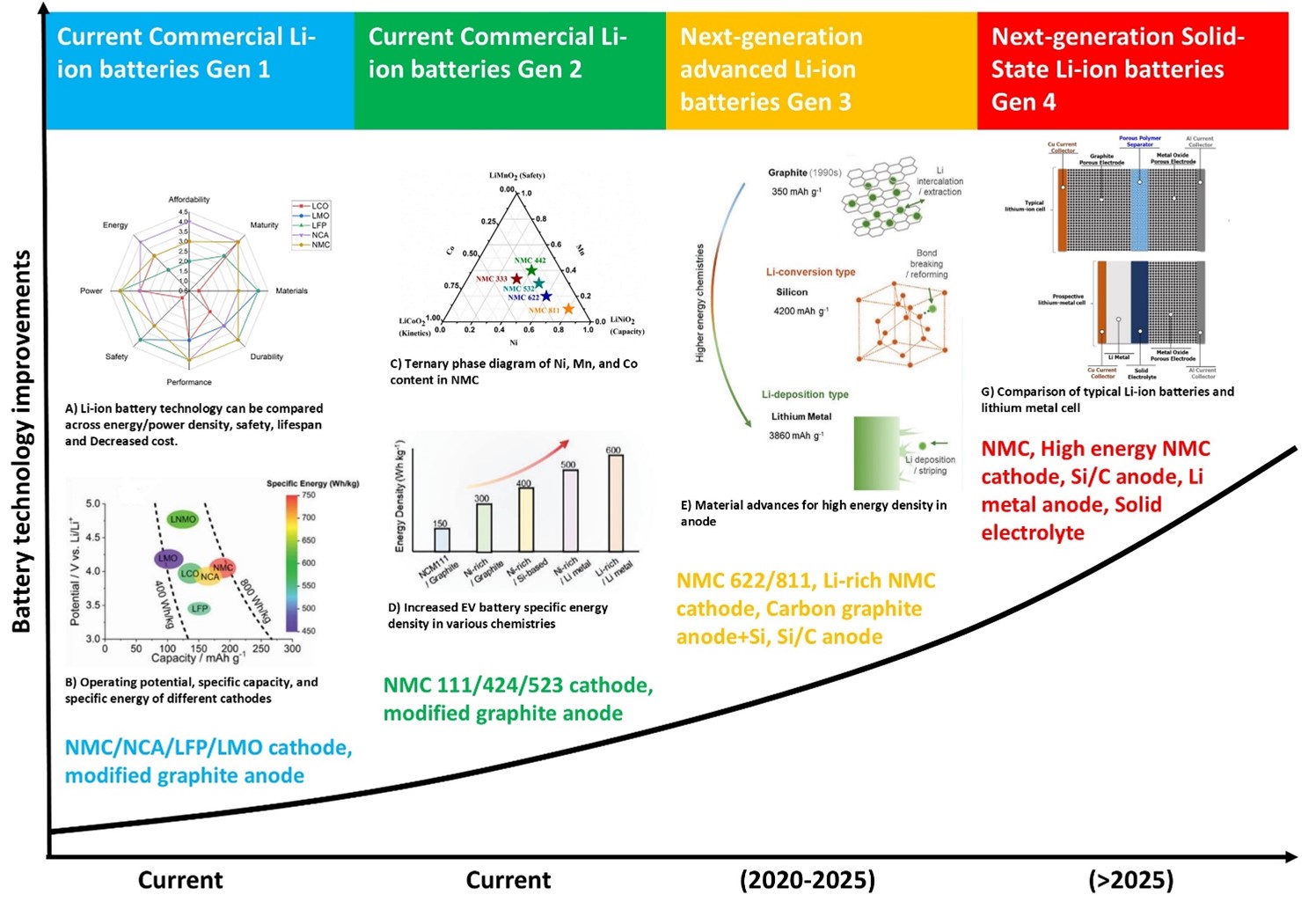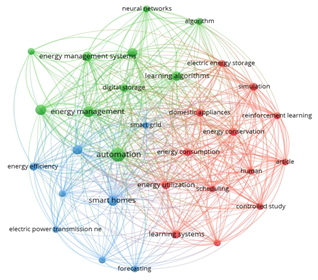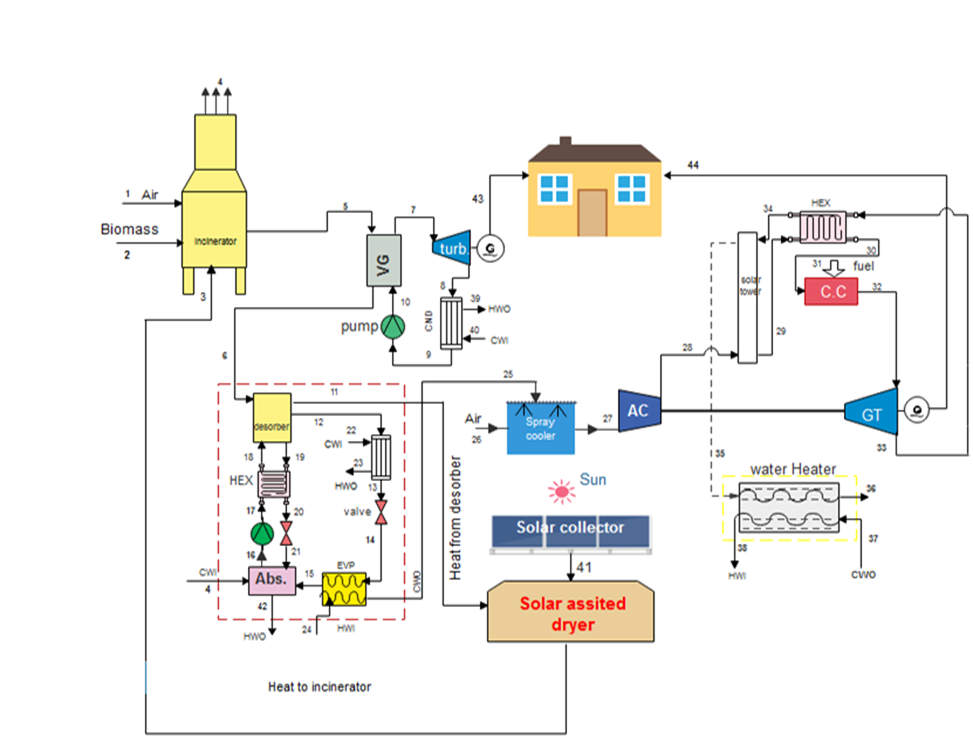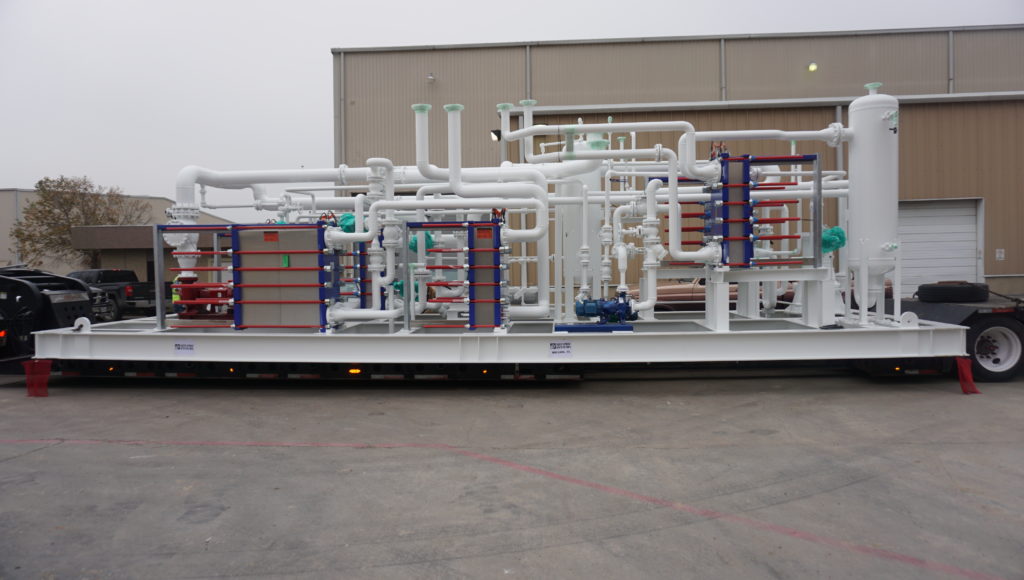The extraction process of nanocellulose from organic waste and incorporating it into biopolymers for mechanical property enhancement

Downloads
Nanocellulose possesses excellent properties such as an elastic modulus of 220 GPa, Young’s modulus of 10- 150 GPa, low density of around 1.6 g/cm3, and high thermal stability. To enhance mechanical flexibility, nanocellulose can strengthen the bio-polymers. This research project aims to review the extraction methods and the characterization of the nanocellulose extracted from organic waste materials such as banana peel, pineapple leaf fiber, crown, corncob, palm oil, etc., focusing on the possibility of adding the nanocellulose to enhance the properties such as tensile strength, young’s modulus, water vapor permeability of the biopolymers. Chemical extraction methods like alkaline treatment, bleaching treatment, sulfuric and formic acid hydrolysis, TEMPO-mediated oxidation, and mechanical extraction methods such as ball milling, ultrasonication, high-pressure homogenization, and grinding have been studied. The results obtained from all the characterization techniques have been tabulated. From the results tabulation, the length of cellulose nanocrystal and cellulose nanofiber is 100-350 nm and 350 nm and above, respectively. The hydrolysis time and the types of acid used will affect the yield and aspect ratio; the acid concentration will also affect the degradation temperature. Mechanical treatment results in a higher yield of the nanocellulose, but mechanical treatment is not economically solvent due to the heavy use of power. Considering that nanocellulose extracted via chemo-mechanical treatment has outstanding characteristics that can potentially improve the mechanical properties when incorporated into the biopolymers.
Hu, D & Ma, W 2020, ‘Nanocellulose as a Sustainable Building Block to Construct Eco-Friendly Thermally Conductive Composites’, Industrial & Engineering Chemistry Research, vol. 59, no. 44, pp. 19465–19484.
Kim, J-H, Shim, BS, Kim, HS, Lee, Y-J, Min, S-K, Jang, D, Abas, Z & Kim, J 2015, ‘Review of nanocellulose for sustainable future materials’, International Journal of Precision Engineering and Manufacturing-Green Technology, vol. 2, no. 2, pp. 197–213.
Rajinipriya, M, Nagalakshmaiah, M, Robert, M & Elkoun, S 2018, ‘Importance of Agricultural and Industrial Waste in the Field of Nanocellulose and Recent Industrial Developments of Wood Based Nanocellulose: A Review’, ACS Sustainable Chemistry & Engineering, vol. 6, no. 3, American Chemical Society, pp. 2807–2828.
Tibolla, H, Pelissari, FM, Martins, JT, Lanzoni, EM, Vicente, AA, Menegalli, FC & Cunha, RL 2019, ‘Banana starch nanocomposite with cellulose nanofibers isolated from banana peel by enzymatic treatment: In vitro cytotoxicity assessment’, Carbohydrate Polymers, vol. 207, pp. 169–179.
Daud, Z, Hatta, MZM, Kassim, ASM, Awang, H & Aripin, AM 2013, Analysis the Chemical Composition and Fiber Morphology Structure of Corn Stalk, p. 5.
Jonoobi, M, Oladi, R, Davoudpour, Y, Oksman, K, Dufresne, A, Hamzeh, Y & Davoodi, R 2015, ‘Different preparation methods and properties of nanostructured cellulose from various natural resources and residues: a review’, Cellulose, vol. 22, no. 2, pp. 935–969
Tomoda, BT, Yassue-Cordeiro, PH, Ernesto, JV, Lopes, PS, Péres, LO, Silva, CF da & Moraes, MA de 2020, ‘Chapter 3 - Characterization of biopolymer membranes and films: Physicochemical, mechanical, barrier, and biological properties’, in MA de Moraes, CF da Silva & RS Vieira (eds), Biopolymer Membranes and Films, Elsevier, pp. 67–95.
Ravindran, L, M.S, S & Thomas, S 2019, ‘Novel processing parameters for the extraction of cellulose nanofibres (CNF) from environmentally benign pineapple leaf fibres (PALF): Structure-property relationships’, International Journal of Biological Macromolecules, vol. 131, pp. 858–870.
Harini, K, Ramya, K & Sukumar, M 2018, ‘Extraction of nano cellulose fibers from the banana peel and bract for production of acetyl and lauroyl cellulose’, Carbohydrate Polymers, vol. 201, pp. 329–339.
Ferrante, A, Santulli, C & Summerscales, J 2020, ‘Evaluation of Tensile Strength of Fibers Extracted from Banana Peels’, Journal of Natural Fibers, vol. 17, no. 10, Taylor & Francis, pp. 1519–1531.
Pelissari, FM, Sobral, PJ do A & Menegalli, FC 2014, ‘Isolation and characterization of cellulose nanofibers from banana peels’, Cellulose, vol. 21, no. 1, pp. 417–432.
Faradilla, RHF, Lee, G, Rawal, A, Hutomo, T, Stenzel, MH & Arcot, J 2016, ‘Nanocellulose characteristics from the inner and outer layer of banana pseudo-stem prepared by TEMPO-mediated oxidation’, Cellulose, vol. 23, no. 5, pp. 3023–3037.
Khawas, P & Deka, SC 2016, ‘Isolation and characterization of cellulose nanofibers from culinary banana peel using high-intensity ultrasonication combined with chemical treatment’, Carbohydrate Polymers, vol. 137, pp. 608–616.
Pereira, ALS, Nascimento, DM do, Filho, M de sá MS, Morais, JPS, Vasconcelos, NF, Feitosa, JPA, Brígida, AIS & Rosa, M de F 2014, ‘Improvement of polyvinyl alcohol properties by adding nanocrystalline cellulose isolated from banana pseudostems’, Carbohydrate Polymers, vol. 112, pp. 165–172.
Ilyas, RA, Sapuan, SM, Ishak, MR & Zainudin, ES 2018, ‘Development and characterization of sugar palm nanocrystalline cellulose reinforced sugar palm starch bionanocomposites’, Carbohydrate Polymers, vol. 202, pp. 186–202.
Prado, KS & Spinacé, MAS 2019, ‘Isolation and characterization of cellulose nanocrystals from pineapple crown waste and their potential uses’, International Journal of Biological Macromolecules, vol. 122, pp. 410–416.
Cherian, BM, Leão, AL, Souza, SF de, Thomas, S, Pothan, LA & Kottaisamy, M 2010, ‘Isolation of nanocellulose from pineapple leaf fibres by steam explosion’, Carbohydrate Polymers, vol. 81, no. 3, pp. 720–725.
Mahardika, M, Abral, H, Kasim, A, Arief, S & Asrofi, M 2018, ‘Production of Nanocellulose from Pineapple Leaf Fibers via High-Shear Homogenization and Ultrasonication’, Fibers, vol. 6, no. 2.
Chen, D, Lawton, D, Thompson, MR & Liu, Q 2012, ‘Biocomposites reinforced with cellulose nanocrystals derived from potato peel waste’, Carbohydrate Polymers, vol. 90, no. 1, pp. 709–716.
Yang, X, Han, F, Xu, C, Jiang, S, Huang, L, Liu, L & Xia, Z 2017, ‘Effects of preparation methods on the morphology and properties of nanocellulose (NC) extracted from corn husk’, Industrial Crops and Products, vol. 109, pp. 241–247.
Rosa, MF, Medeiros, ES, Malmonge, JA, Gregorski, KS, Wood, DF, Mattoso, LHC, Glenn, G, Orts, WJ & Imam, SH 2010, ‘Cellulose nanowhiskers from coconut husk fibers: Effect of preparation conditions on their thermal and morphological behavior’, Carbohydrate Polymers, vol. 81, no. 1, pp. 83–92.
Liu, C, Li, B, Du, H, Lv, D, Zhang, Y, Yu, G, Mu, X & Peng, H 2016, ‘Properties of nanocellulose isolated from corncob residue using sulfuric acid, formic acid, oxidative and mechanical methods’, Carbohydrate Polymers, vol. 151, pp. 716–724.
Nang An, V, Chi Nhan, HT, Tap, TD, Van, TTT, Van Viet, P & Van Hieu, L 2020, ‘Extraction of High Crystalline Nanocellulose from Biorenewable Sources of Vietnamese Agricultural Wastes’, Journal of Polymers and the Environment, vol. 28, no. 5, pp. 1465–1474.
Soni, B, Hassan, EB & Mahmoud, B 2015, ‘Chemical isolation and characterization of different cellulose nanofibers from cotton stalks’, Carbohydrate Polymers, vol. 134, pp. 581–589.
Hassan, SH, Velayutham, TS, Chen, YW & Lee, HV 2021, ‘TEMPO-oxidized nanocellulose films derived from coconut residues: Physicochemical, mechanical and electrical properties’, International Journal of Biological Macromolecules, vol. 180, pp. 392–402.
Parikh, D, Thibodeaux, D & Condon, B 2007, ‘X-ray Crystallinity of Bleached and Crosslinked Cottons’, Textile Research Journal, vol. 77.
Lee, H-L, Chen, GC & Rowell, RM 2004, ‘Thermal properties of wood reacted with a phosphorus pentoxide–amine system’, Journal of Applied Polymer Science, vol. 91, no. 4, pp. 2465–2481.
Faria, LUS, Pacheco, BJS, Oliveira, GC & Silva, JL 2020, ‘Production of cellulose nanocrystals from pineapple crown fibers through alkaline pretreatment and acid hydrolysis under different conditions’, Journal of Materials Research and Technology, vol. 9, no. 6, pp. 12346–12353.
Lu, P & Hsieh, Y-L 2010, ‘Preparation and properties of cellulose nanocrystals: Rods, spheres, and network’, Carbohydrate Polymers, vol. 82, no. 2, pp. 329–336.
Jiang, F & Hsieh, Y-L 2013, ‘Chemically and mechanically isolated nanocellulose and their self-assembled structures’, Carbohydrate Polymers, vol. 95, no. 1, pp. 32–40.
Srivastava, KR, Dixit, S, Pal, DB, Mishra, PK, Srivastava, P, Srivastava, N, Hashem, A, Alqarawi, AA & Abd_Allah, EF 2021, ‘Effect of nanocellulose on mechanical and barrier properties of PVA–banana pseudostem fiber composite films’, Environmental Technology & Innovation, vol. 21, p. 101312.
Ariffin, H, Norrrahim, MNF, Yasim-Anuar, TAT, Nishida, H, Hassan, MA, Ibrahim, NA & Yunus, WMZW 2018, ‘Oil Palm Biomass Cellulose-Fabricated Polylactic Acid Composites for Packaging Applications’, in M Jawaid & SK Swain (eds), Bionanocomposites for Packaging Applications, Springer International Publishing, Cham, pp. 95–105, viewed <https://doi.org/10.1007/978-3-319-67319-6_5>.
Llanos, JHR & Tadini, CC 2018, ‘Preparation and characterization of bio-nanocomposite films based on cassava starch or chitosan, reinforced with montmorillonite or bamboo nanofibers’, International Journal of Biological Macromolecules, vol. 107, pp. 371–382.















